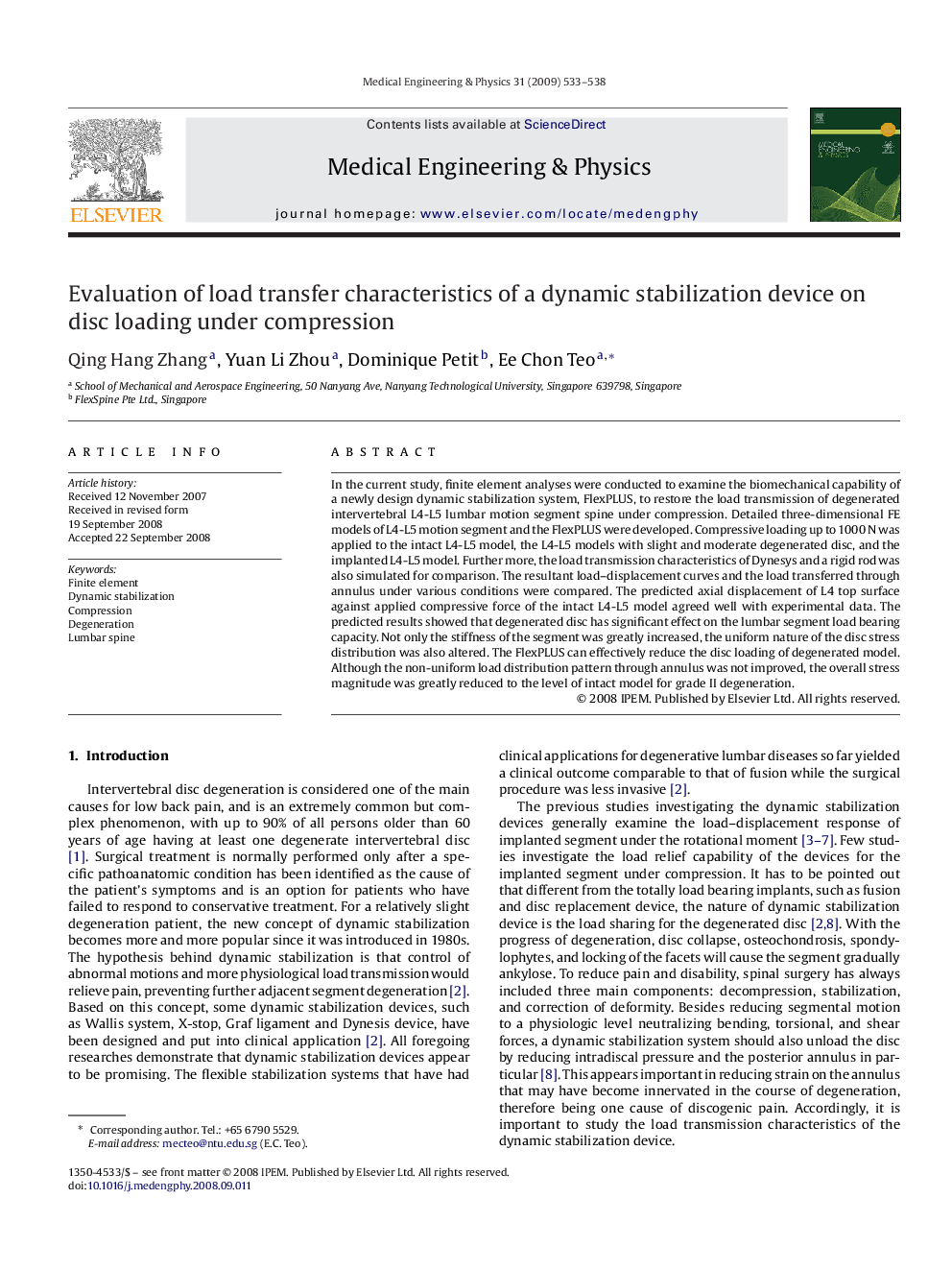| Article ID | Journal | Published Year | Pages | File Type |
|---|---|---|---|---|
| 876978 | Medical Engineering & Physics | 2009 | 6 Pages |
In the current study, finite element analyses were conducted to examine the biomechanical capability of a newly design dynamic stabilization system, FlexPLUS, to restore the load transmission of degenerated intervertebral L4-L5 lumbar motion segment spine under compression. Detailed three-dimensional FE models of L4-L5 motion segment and the FlexPLUS were developed. Compressive loading up to 1000 N was applied to the intact L4-L5 model, the L4-L5 models with slight and moderate degenerated disc, and the implanted L4-L5 model. Further more, the load transmission characteristics of Dynesys and a rigid rod was also simulated for comparison. The resultant load–displacement curves and the load transferred through annulus under various conditions were compared. The predicted axial displacement of L4 top surface against applied compressive force of the intact L4-L5 model agreed well with experimental data. The predicted results showed that degenerated disc has significant effect on the lumbar segment load bearing capacity. Not only the stiffness of the segment was greatly increased, the uniform nature of the disc stress distribution was also altered. The FlexPLUS can effectively reduce the disc loading of degenerated model. Although the non-uniform load distribution pattern through annulus was not improved, the overall stress magnitude was greatly reduced to the level of intact model for grade II degeneration.
